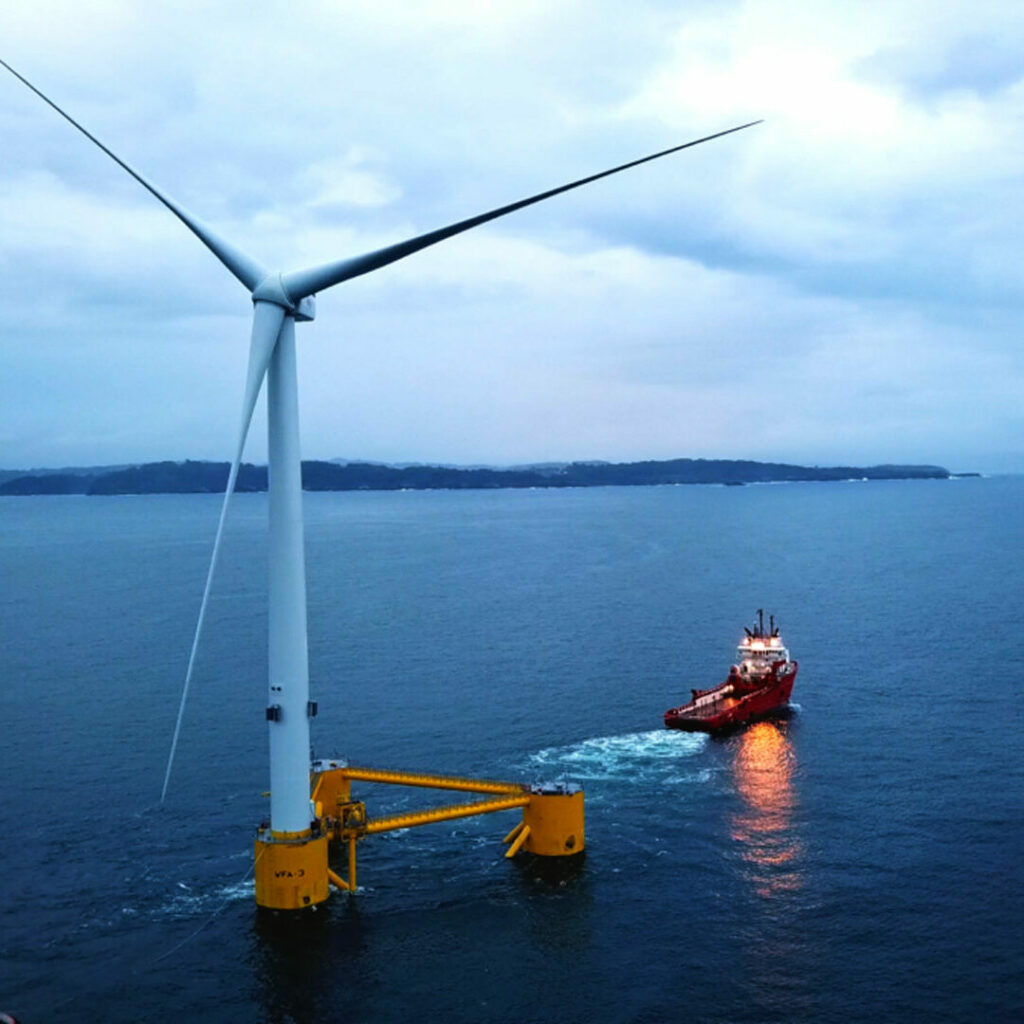Marine Advisory in Offshore Wind from Site Selection to Operations
As the global offshore wind market continues to grow, we asked our colleague and Managing Director of Renewable Energy, John MacAskill, on some of the marine challenges facing emerging offshore wind markets and on what the role of a marine advisor in the sector, constitutes.
2023 alone has a number of offshore wind auctions taking place, with a busy few years ahead to 2030 across the world. In tendering though, what are the challenges from a marine perspective that developers should be aware?

When tendering you make some assumptions, one due to the length of time between winning a lease and actual construction, tends to be that generally the supply chain will be there for you. It’s a challenge you put aside until after the lease is won. But some elements from the marine side need to be considered. If you are pursuing a lease for a floating site then the port infrastructure is even more vital than fixed due to the shoreside construction and integration and the distance of that tow to site. So, in the leasing process, it is important to understand the marine oriented inputs into the CapEx and OpEx models.
On the flip side of that, can you tell us a bit about the opportunity to marine supply chains for countries going to auction?
Huge opportunity.
A lot of the obvious focus is on the big-ticket items such as construction ports, so laydown and pre-assembly for fixed, and fabrication and integration etc for floating. These are vital and ports with or the capability to offer this with some modifications are key. But what is often missed is the large number of smaller work vessels such as construction offshore vessels and the like needed.
Understanding the wider opportunity allows ports to offer themselves as a logistics marine base, such as Aberdeen does and specialises in. So, ports with existing marine and offshore engineering and service supply chains will have a real chance of prospering as well as those larger ports capable of offering large laydown or construction facilities.
What about floating – with many countries looking to take offshore wind further offshore – what are the challenges from a marine perspective unique to floating?
As mentioned earlier floating projects bring additional challenges.

Port selection is more challenging as the floater construction is an added element; both the actual construction – whether steel or concrete – and the integration with the WTG at quayside with the necessary wet storage capacity. The construction phase will also need ports as logistic bases for the mooring equipment, so enough storage and laydown and with effective marine logistics to support the anchor handlers. The tow and hook ups, while not technically novel to the marine and offshore sector, will be a significant project co-ordination exercise.
And of course, we have not mentioned O&M yet and the marine challenges that that poses to floating wind. At the moment ‘tow to port’ is the necessary main component exchange strategy. That brings challenges to the fatigue life of the wind turbine and basic risks in transit.
ABL Group companies are supporting a number of JIPs looking at in situ main component exchange initiatives, which will be key for GW scale projects.
What makes ABL Group the marine advisor of choice for offshore wind development?
ABL Group is the most experienced marine consultant working on offshore wind.
The cost of making the wrong marine T&I engineering or operation decision can be excessive, a single day delay during construction can easily be upwards of $0.5m per day (the vessel spread, port, etc), so understanding the marine concepts and the de-risking needed as a project goes through feasibility, Pre-FEED and FEED is vital.
The volume of marine operations offshore for offshore wind will grow every year, bringing new challenges such as larger WTGs, less experienced supply chains, limited vessels, floating etc.
We bring the vest experience of assuring the T&I of nearly 100 offshore wind projects constructed and over 10 floating projects, together with 100s and 100s of surveys of vessels deployed in offshore wind operations. We have overseen almost 50 cable repairs or replacements and design offshore support support vessels of various types.
This combined expertise is being deployed ever earlier in projects as the industry seeks to de-risk projects increasingly complex marine T&I operations.

How can we help?
ABL Group has seamlessly combined a deep legacy in marine expertise with cutting-edge renewable energy engineering and technical advisory, since its first foray in the early days of offshore wind dating back to the early 2000s. The combination of our technical and marine specialisation has helped us work on more than 330 offshore wind farms across more than 20 countries worldwide.
ABL marine consultants together with colleagues at The Renewable Energy Consultants, OWC, will be available to discuss our services in marine advisory support at the following upcoming Offshore Wind events in October:
- FOW23, stand G54
- Wind Energy Ireland, stand D24
- EOLICA Net-Zero Conference Italy, Stand A05
- Energy Taiwan, Pod I, UK Pavilion
